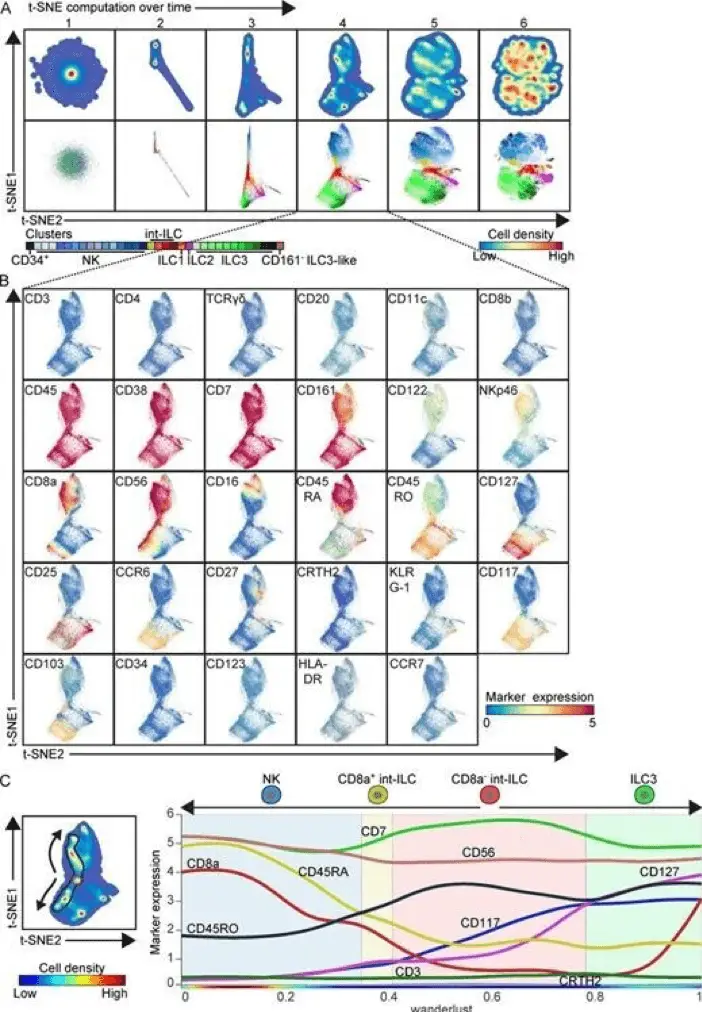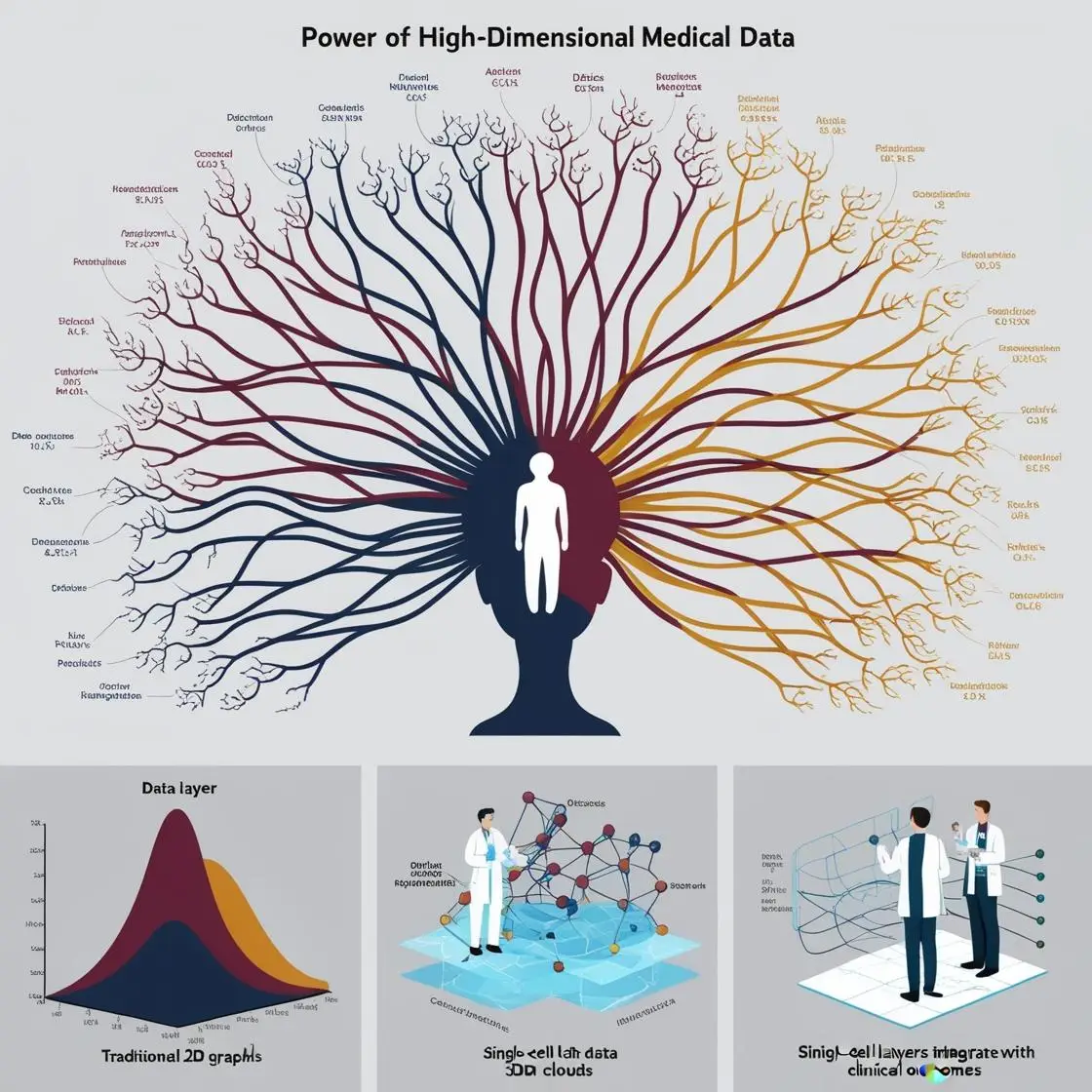In the dynamic world of cellular biology, cells are rarely static entities. They grow, differentiate, and transition through various states. Trajectory analysis and pseudotime inference are powerful tools that allow us to capture these cellular journeys, offering a glimpse into the narrative of cellular development and differentiation. Let’s embark on an exploration of these fascinating concepts and their applications.
Concepts of Cellular Trajectories
Imagine you’re watching a time-lapse video of a tree growing from a seed. At any single snapshot, you see trees at different stages of growth. Cellular trajectories work similarly – we capture cells at various stages of a biological process and reconstruct their developmental path.
The concept of cellular trajectories assumes that cells transition smoothly between states, rather than jumping abruptly from one state to another. This continuity allows us to order cells along a trajectory, even when we’re looking at a snapshot of a population.
Algorithms for Pseudotime Inference
Pseudotime is a measure of how far along a cell is in a biological process. It’s “pseudo” because it’s not real time – we’re inferring the ordering of cells based on their molecular profiles.
Several algorithms have been developed for pseudotime inference:
- Wanderlust: Introduced by Bendall et al. (2014) in their seminal paper “Single-cell trajectory detection uncovers progression and regulatory coordination in human B cell development” (Cell). This algorithm orders cells in a trajectory by analyzing nearest neighbor relationships in high-dimensional space.
- Monocle: Developed by Trapnell et al. (2014), Monocle uses dimensionality reduction and minimum spanning trees to order cells.
- Wishbone: An extension of Wanderlust that can handle branching trajectories, introduced by Setty et al. (2016).
- CellRank2 : unified fate mapping in multiview single-cell data, by Weiler et al. (June 2024), in Nature Methods

Applications in Developmental Biology and Differentiation Studies
The power of trajectory analysis is beautifully demonstrated in various studies. Let’s explore a few examples, two of them coming from the department LUMC where I was working:
- B Cell Development: In their groundbreaking work, Bendall et al. (2014) used mass cytometry and trajectory analysis to map human B cell lymphopoiesis. They uncovered a continuum of development states and identified key molecular events in B cell maturation. This study was like creating a roadmap of B cell development, showing the highways and byways cells take as they mature.
- Innate Lymphoid Cell Differentiation: Li et al. (2018) in their paper “Mass cytometry reveals innate lymphoid cell differentiation pathways in the human fetal intestine” (Science Immunology) took us on a journey through the developing human gut. Using mass cytometry and pseudotime analysis, they mapped out how innate lymphoid cells (ILCs) differentiate in the fetal intestine. This study was akin to watching the cast of cellular characters emerge and take their places in the grand theater of the developing immune system.
- T Cell Differentiation in Cancer: In our paper, Beyrend et al. (2019) “PD-L1 blockade engages tumor-infiltrating lymphocytes to co-express targetable activating and inhibitory receptors” (Journal for ImmunoTherapy of Cancer), we applied trajectory analysis to understand T cell differentiation in the context of cancer immunotherapy. By mapping the journey of T cells following PD-L1 blockade, we uncovered a path of T cell differentiation that led to the co-expression of both activating and inhibitory receptors.

In our study, we were particularly intrigued by how T cells evolved in response to immunotherapy. It was like watching a character develop in a complex novel – our T cells started as naive players and, through the course of treatment, developed into sophisticated entities with a mix of activating and inhibitory features. This trajectory wasn’t a simple linear path, but rather a winding road with unexpected turns.
We found that as T cells progressed along this trajectory, they began to co-express receptors that we traditionally thought of as either “good” (activating) or “bad” (inhibitory). This co-expression pattern was like discovering that our cellular protagonists had developed nuanced, multifaceted personalities. It challenged our preconceptions and opened up new possibilities for therapeutic interventions.
The Beauty and Challenges of Trajectory Analysis
In our work, as in many others, trajectory analysis proved to be an invaluable tool, allowing us to piece together snapshots of cellular states into a coherent narrative of biological processes. It was like being a cellular cartographer, mapping the unexplored territories of T cell biology in the context of cancer treatment.
However, it’s not without its challenges. Determining the start and end points of a trajectory can be tricky, and branching processes can complicate the analysis. In our study of T cell differentiation, we grappled with these issues, carefully considering how to define the beginning and end states of our cellular journey.
Despite these challenges, trajectory analysis continues to provide profound insights into cellular development and differentiation. It’s helping us understand everything from how stem cells decide their fate to, in our case, how T cells evolve in response to cancer therapy.
As we continue to refine these methods and apply them to diverse biological questions, we’re writing new chapters in our understanding of cellular biology. Each study, including our own, adds a new page to the grand narrative of life, helping us read the stories written in the language of cells.
In the end, trajectory analysis reminds us that in biology, as in life, it’s not just about the destination, but the journey. As we map these cellular journeys, we’re not just observing cells – we’re uncovering the very narratives of life itself, written in the eloquent language of molecular expression. Our work on T cell trajectories in cancer immunotherapy is just one chapter in this ongoing story, and we’re excited to see what new plots and characters will be revealed as the field continues to evolve.
When I delved into trajectory analysis for my paper on PD-L1 (Beyrend et al., "PD-L1 blockade engages tumor-infiltrating lymphocytes to co-express targetable activating and inhibitory receptors"), I felt like a cellular cartographer, mapping the uncharted territories of T cell differentiation. My colorful plots were so pretty, they could've been framed and hung in the Louvre of Immunology. But here's the rub: pretty plots don't always equal biological truth. Because in the end, while in silico analysis might make you feel like a data wizard, Mother Nature always has the final say. And trust me, she's not easily impressed by fancy graphics alone
Guillaume Beyrend




